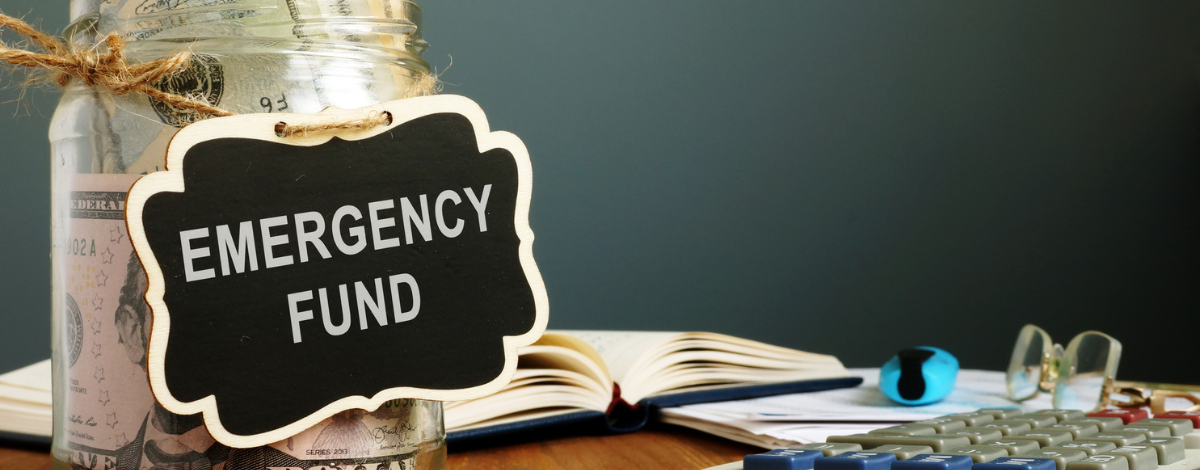Where to Keep an Emergency Fund and How to Get Started
Last Updated: April 7, 2023

As much as we hope for the best, life is unpredictable, and emergencies happen--usually when we least expect them. Having an emergency fund provides a safety net for when the unexpected hits. According to experts, an emergency fund should have enough money to cover at least 3-6 months of living expenses, with 6-12 being ideal. Therefore, it's important to open the right account at a financial institution that is the best fit for you.
Read more to find out where to keep an emergency fund (hint: it’s not under your mattress), and how to get started.
Where to Keep an Emergency Fund
Traditional Savings Account
The term “savings account” typically refers to the traditional savings account at a financial institution. These accounts provide convenient access to your money when you need it, and often have low or no fees. A traditional savings account allows you to earn interest on your money, but usually at a lower rate than other savings products.
High Yield Savings Account
While many people are familiar with traditional savings accounts, less people are familiar with high-yield savings accounts and how they can help build an emergency fund. These accounts offer a higher interest rate than traditional savings accounts, which means your money will grow over time. Plus, your money is easily accessible if you need to withdraw funds in the event of an emergency.
Though not necessarily a high-yield savings account, the Centier Connect Savings Account helps clients earn more interest than the national average, which results in extra money—all simply by using your debit card on everyday purchases.
Certificates of Deposit (CDs)
CDs rose in popularity over the past year, due to their ability to earn a higher interest rate than a traditional savings account. Unlike traditional or high-yield savings accounts, CDs require you to keep your deposit in the account for a set period—anywhere from 30 days to 4 years, depending on the financial institution.
If you need your funds before the CD reaches maturity, you may incur a penalty. CDs can be a viable option for lump sums of money that you do not need access to right away.
How to Start Saving
Determine Your Monthly Expenses
The best place to start a plan for savings is by first determining your monthly expenses, which can be done by creating a budget. When building your budget, be sure to include costs for housing, utilities, credit card payments, food, transportation, and any other monthly necessities. To determine how much you should have in your account, multiply that number by three to six depending on how many months you want your fund to cover.
Start Small
Sometimes people put off starting to save because they do not feel that they have enough money to contribute. But it is okay if you do not have a lot of extra money to set aside. You can start small, even saving $25 a week will begin to add up.
Make a Game of Saving
Sometimes saving feels more like a chore than something you want to do. By making a game out of saving you can have a little fun with it. Why not create a friendly competition with your spouse or friend to see who can save more? You can also challenge yourself by having a “no spend” month.
Of course, you still need to pay for your basic needs. But, pick something else to cut out for the month like entertainment, restaurants, coffee, vending machines, or whatever else you typically spend on.
Make it Automatic
If you are someone that tends to spend money when it’s there or forgets to transfer money into your savings when you get paid, you might want to set up automatic transfers to take the guesswork out of saving. Automatic transfers are typically accessible from a financial institution’s online or mobile banking portals, and with a few clicks, you can have a designated amount of money scheduled to transfer from your checking to your savings on specific dates.
Revisit and Revise your Plan
Finally, it's good practice to revisit and revise your emergency fund plan regularly. Your financial situation may change, and you may need to adjust your savings goals accordingly. Additionally, if any unexpected expenses arise, you may need to use those funds. You then would need to make a plan to replenish it.
Our Centier Digital App has features and functions that can further help with setting goals and money management helping you to create a better tomorrow.

